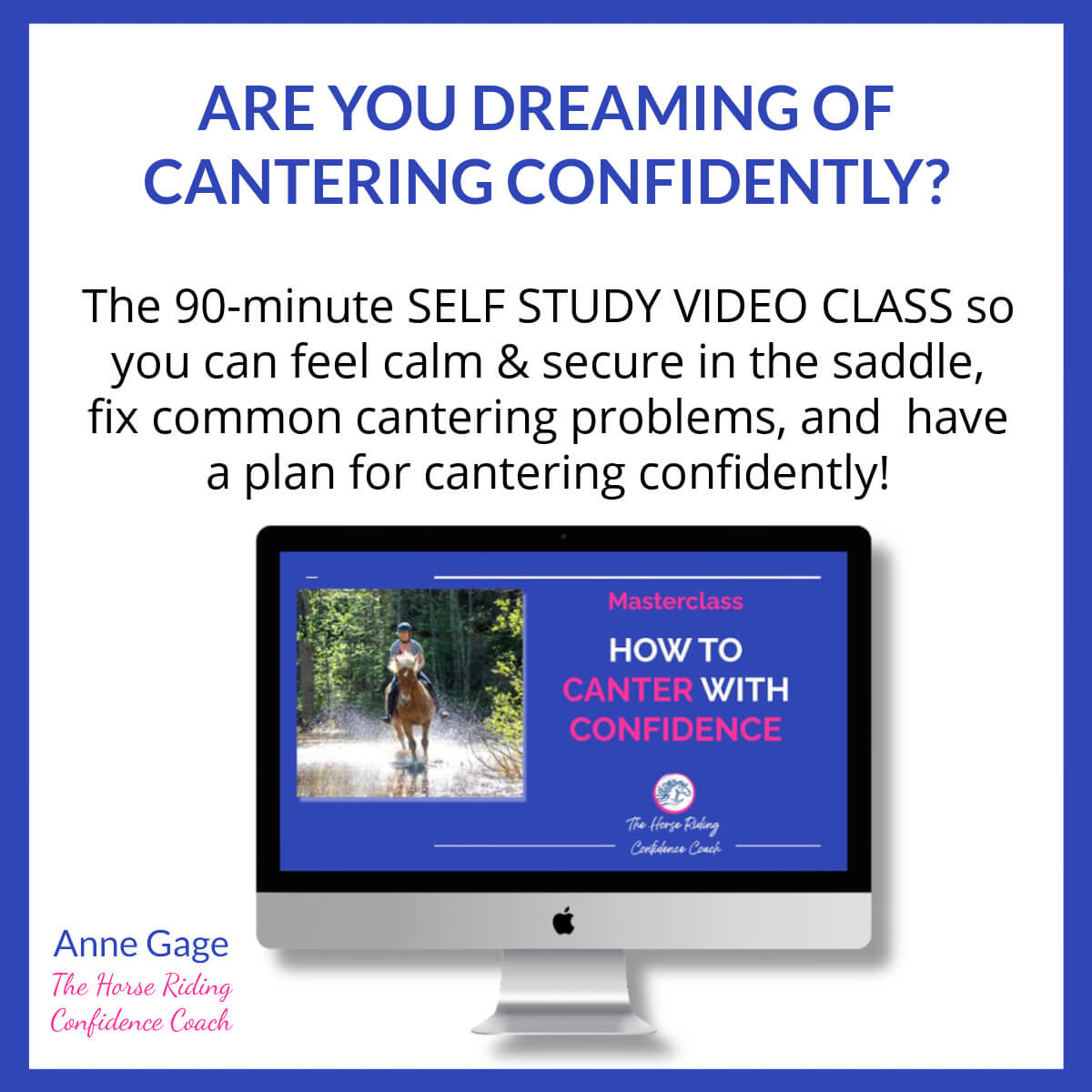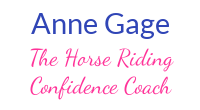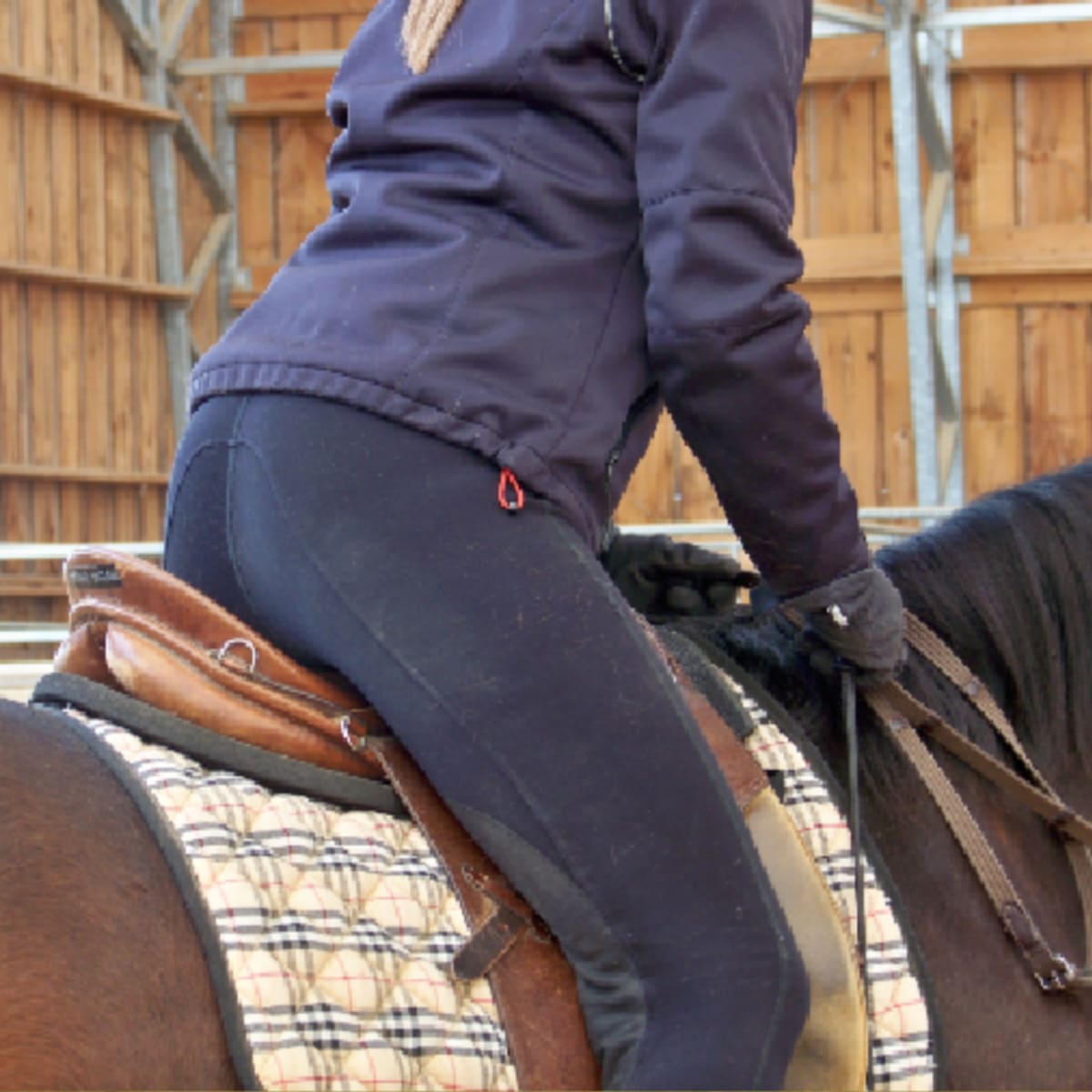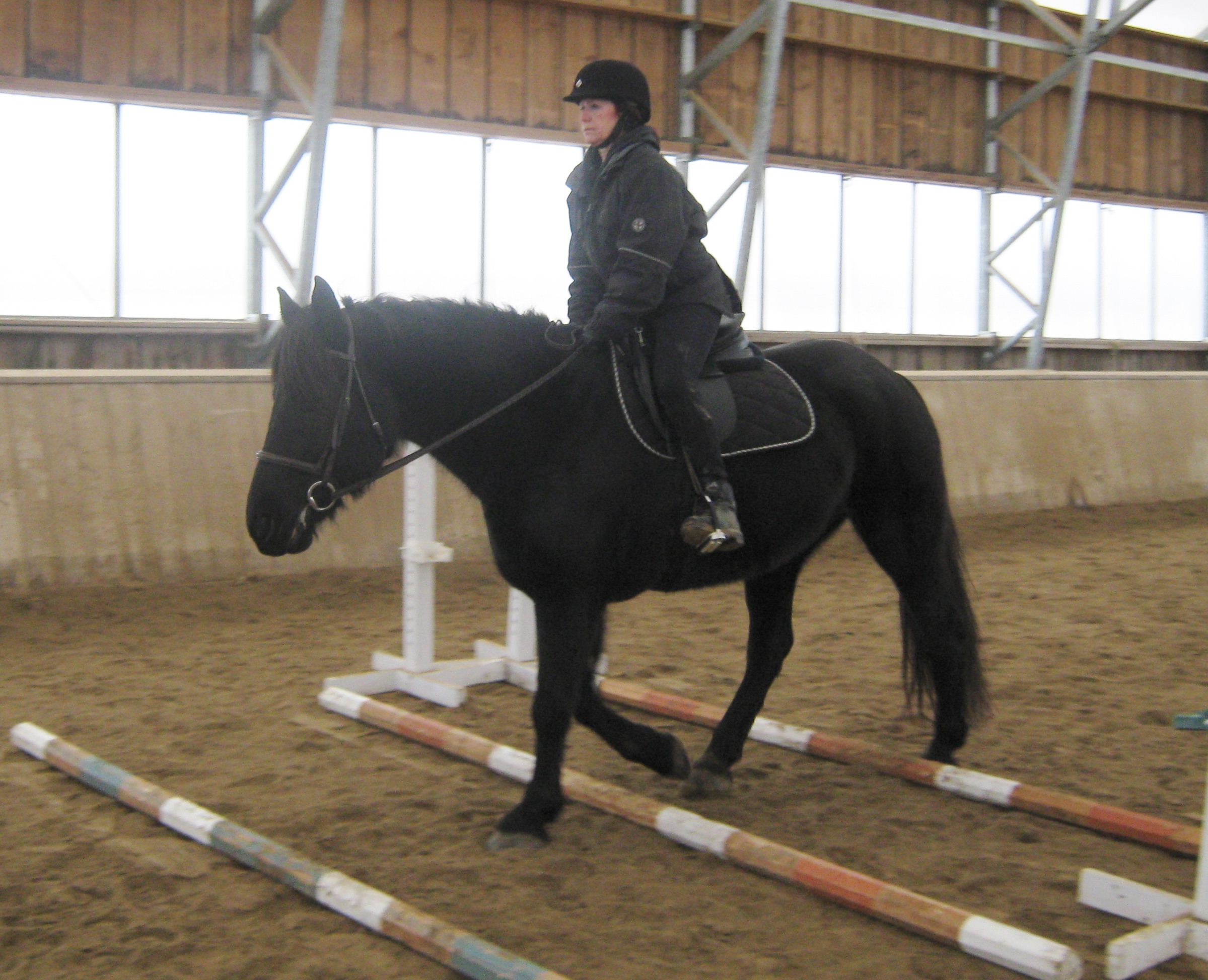Do you feel anxious about horse riding because you bounce when your horse trots or canters?
Tension is the problem as it causes you to grip and be unstable in the saddle.
And that prevents you from moving with your horse.
Read on for a simple exercise you can do at the walk and trot to improve your confidence for riding the sitting trot and canter.
Incorrect Riding Position Affects You and Your Horse
Your horse mirrors you. If you want your horse to be supple and without resistance, then you must ride with suppleness and softness.
But, if your base of support - your seat and leg - aren't in the right place, you'll be off balance, your leg won't be stable, and you'll have tension in your body.
As a result, your brain automatically and unconsciously triggers the fear responses in your body that affects your confidence.
In my coaching and at clinics, I often meet horse riders who are:
- nervous about cantering
- can't sit the trot or canter without bouncing
- complain that their horse either won't canter or rushes when he does canter.
It's important to check first that ill-fitting tack or physical pain are not the root cause of the problem. The saddle must be properly balanced and fit the rider as well as the horse.
If the saddle isn't the right fit or balanced for the rider, it will be difficult to ride without tension. It will be a struggle to maintain the correct riding position.
In cases where the problem is not poorly fitting tack or some physical issue with the horse, the problem is the rider's imbalance and/or tension in the saddle.
But when you find that sweet spot where you can ride without gripping or tension, you'll feel balanced, secure and able to canter with confidence!
Because you won't bounce at the sitting trot or canter!
And your horse will be able to relax as well, as she also feels more balanced.
Balanced Riding Position Makes Horse Riding Less Work
Once your have the correct riding position and you find the magic 'sweet spot', you'll also be pleasantly surprised at the change in your horse.
High headed, braced, short stepping, rushing horses level out, relax and lengthen their stride. And it's much easier to sit the trot or canter on a relaxed horse in a good frame.
Plus, you'll find that you're not working as hard, you give clearer cues, and that you'll get more cooperation and is from her horse.
The reason is simple - when you're unbalanced, you'll grip with your leg muscles, brace in your shoulders and arms and have little movement in your joints.
These poor riding habits prevent you from moving with your horse. So you bounce on your horse's back - unable to sit the trot or canter.
And that makes it difficult - and uncomfortable - for your horse to carry you, stay relaxed, and do what you're asking him to do.
Your joints - ankles, knees, hips, elbows and shoulders - need to operate as shock absorbers. They absorb the horse's movement allowing you to move with it instead of being bounced and bumped about.
The Half Seat Exercise Improves Cantering Confidence
So here's the simple exercise to find that sweet spot in the saddle, improve your riding position, and stop bouncing in the sitting trot and canter.
It's called - The Half Seat Position.
(Note: This exercise should only be done on a safe, quiet horse who will not react strongly if you lose your balance or grip too tightly with your legs. Always start with the horse standing still. And, for additional safety, ask an experienced horse person to hold your horse for you.)
Step 1: Lift only your seat bones off your saddle and push them backward slightly. As you do this, your hip angle will close and your upper body will move a bit closer to your horse’s neck.
Avoid lifting yourself all the way out of your saddle and standing on your stirrups. There should be no light visible between you and the saddle.
Step 2: Breathe deeply and calmly. An the exhale, drop your shoulders away from your ears and release tension elsewhere in your body.
Watch you don’t stiffen your arms. Allow your elbows to soften and act as shock absorbers, too.
Step 3: Gently close your inner thighs towards the front as your calves lightly hug your horse’s barrel.
Step 4: Soften your ankle, knee and hip joints as your legs gently lengthen down (imagine bungee cords connecting the bottoms of your feet to the ground). At the same time, feel your seat bones pointing slightly up and back.
Step 5: Support your upper body by resting your knuckles on your horse’s shoulders until you find your balance.
Keep your fingers closed and your wrists straight to avoid injuring your hands or wrists. This also prevents you from pulling on your horse’s mouth if you lose your balance.
Additionally, use a neck rope to help stabilise you and prevent pulling on the reins.
Step 6: Ask your horse to go into walk (for extra safety, have an experienced horse person lead or lunge your horse at the walk).
As your horse moves at the walk, focus on ‘down, down, down’ with each step and feel all of your joints opening and closing slightly (like shock absorbers) as they absorb the motion.
Step 7: Once you feel balanced, lift one hand off your horse's neck and see if you can maintain this posture. Then switch hands - one on the neck; one off the neck.
Finally, try taking both hands off your horse's neck for a step or two. Remember to breathe and release tension from your body with each exhale.
Increasing the Challenge In The Half Seat Exercise
Once you've found your balance with your horse standing still then try the half seat exercise at the walk. You might want to have someone lead or lunge your horse so you don't need to worry about steering.
Begin with holding the half seat position for a few steps and you'll soon find you're able to hold the position comfortably for longer.
When you're comfortable riding in the half seat position at the walk then you can increase the challenge by walking over poles.
As your ability to hold the half-seat position increases, practice the position at the trot. Move from posting trot to half-seat back to posting trot.
Then try moving from half seat to sitting the trot for a few steps. When you find that you can sit the trot without bouncing, it's time to try cantering in the half-seat position.
Again, start on the lunge line, if possible so you can begin in the half-seat position. As you feel comfortable and balanced, practice lowering your seat into the saddle for a few strides and then returning to the half-seat position.
By practicing the half-seat position you'll soon be able to stop bouncing and canter with confidence.




